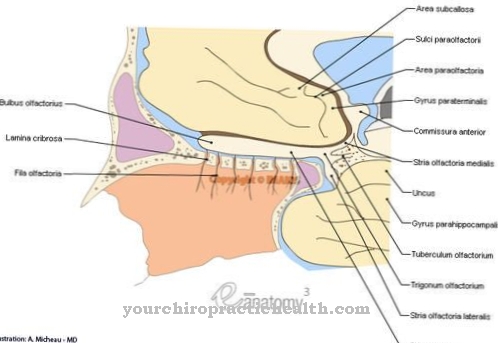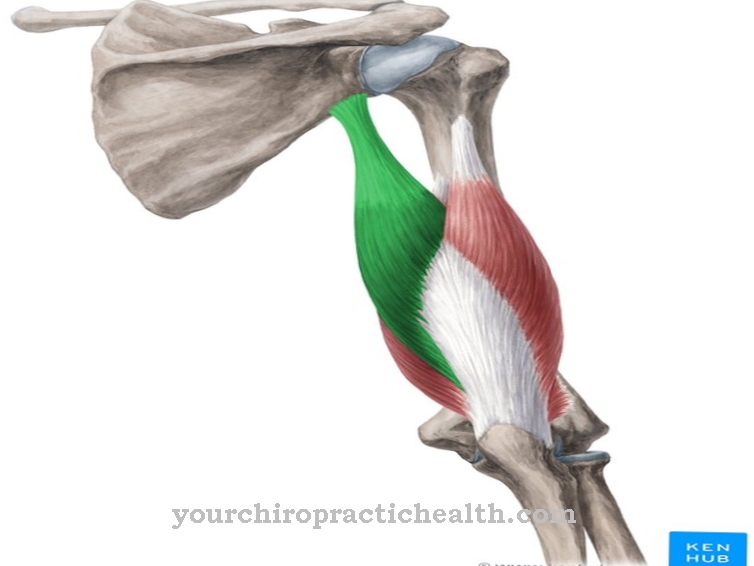Stem cells are considered to be the precursors of body cells and can divide almost endlessly. A wide variety of cell types develop from them.
What are the stem cells?
A stem cell is a body cell that has no function in the organism. For this reason, they have the ability to develop into a wide variety of cell types (e.g. nerve cells, heart cells, blood cells).
Stem cells are therefore pluripotent and therefore play a special role in regenerative medicine. It can also be said that it is a form of the original cell, since a stem cell can multiply indefinitely. This type of cell is divided into embryonic and adult stem cells.
Anatomy & structure
As the name suggests, embryonic stem cells only occur in the developmental stage of an embryo. They are not yet specialized, which is why they are called totipotent. This means that a complete organism can develop from a cell.
In contrast, adult stem cells are cells that are found in the human body after birth. Compared to embryonic stem cells, they are only multipotent and only form certain types of cells. The adult stem cells include cells that are located in the human bone marrow and reproduce the blood cells that are essential for life. Furthermore, stem cells could also be detected in the liver. They ensure that the dead cells are replaced in the event of damage.
Probably the best known repair function in which cells are involved is the healing of the skin after superficial abrasions. In principle, no complete organism can develop from adult stem cells. Certain cell types can be grown from stem cells in the laboratory with the help of nutrient solutions.
Function & tasks
Stem cells have the ability to form so-called daughter cells. These also have the properties of a stem cell. This is made possible by asymmetrical cell division, which, however, has not yet been fully clarified by science. Which cells stem cells ultimately develop into depends on the biological area in which they are found.
Stem cells are particularly important in blood formation. From them red and white blood cells and also platelets develop in several steps. So they contribute to the renewal, repair and growth of the structures of the human body.
Stem cells are mainly used in the treatment of diseases. They ensure that damaged or lost tissue can be replaced or restored. They have been used to heal certain diseases for 40 years now. The treatment with the help of stem cells not only helps combat the symptoms of certain diseases, but also ensures that the damage in the body is regenerated over the long term.
Embryonic stem cells may by law neither be obtained nor used in Germany, as embryos have to be destroyed for this. Stem cell research is only possible if very strict requirements are met. The adult stem cells can be obtained by means of certain interventions (e.g. bone marrow puncture for bone marrow donation). For the patient, however, this process is painful and also associated with risks.
For some years now, it has also been possible for stem cells to be obtained from the blood of the umbilical cord immediately after delivery. Since they stand exactly between embryonic and adult stem cells in their development, they have some positive properties. The removal is painless and risk-free for the newborn child. The use of stem cells from umbilical cord blood is now increasing continuously worldwide. Many parents want to have the stem cells from the umbilical cord blood frozen for their child or anonymously.
Diseases
Probably the best known disease of the so-called blood-forming stem cells is leukemia. The lifespan of blood cells is limited, which is why the body has to produce them again and again. If there is a genetic change in the corresponding stem cells, more and more non-functional white blood cells enter the bloodstream, thereby displacing the normal components of the blood.
There is then a shortage of red blood cells, which are responsible for transporting the oxygen. Anemia develops, which then leads to a lack of oxygen in the organism. In leukemia, there are not enough platelets to stop bleeding. The tendency to bleed increases and the lack of functional white blood cells increases the susceptibility to infections. Medicine differentiates between acute and chronic leukemia. Both types of this condition cannot be prevented. Adult hematopoietic stem cells are used in the treatment of leukemia, and they also help the damaged bone marrow to regenerate after chemotherapy or radiation therapy.
In connection with the topic of "stem cells", the stem cell law should also be mentioned. It serves to protect unborn life. It contains regulations regarding the circumstances in Germany that enable research into embryonic stem cells. To obtain embryonic stem cells, it is necessary to kill cloned embryos or embryos created by artificial fertilization.
This procedure is prohibited in Germany by the Embryo Protection Act. Under certain conditions, however, it is possible that embryonic stem cells from aborted fetuses can be imported for research purposes. The "Central Ethics Committee" checks and evaluates whether the requirements of the strict requirements of the Stem Cell Act are met. The Robert Koch Institute (RKI for short) is the responsible approval authority. Embryonic stem cells can only be imported from abroad with their consent.
Typical & common diseases of the blood & erythrocytes
- Hemolysis
- Anemia (anemia), iron deficiency anemia
- Renal anemia
- Sickle cell anemia












.jpg)



.jpg)










.jpg)
